SUMMARY CMI
FYCOMPA®
Consumer Medicine Information (CMI) summary
The full CMI on the next page has more details. If you are worried about using this medicine, speak to your doctor or pharmacist.
▼ This medicine is new or being used differently. Please report side effects. See the full CMI for further details.
1. WHY AM I OR MY CHILD USING FYCOMPA?
FYCOMPA contains the active ingredient perampanel. FYCOMPA is used to treat certain forms of epilepsy.
For more information, see Section 1. Why am I or my child using FYCOMPA? in the full CMI.
2. WHAT SHOULD I OR MY CHILD KNOW BEFORE I OR MY CHILD USE FYCOMPA?
Do not use if you have ever had an allergic reaction to FYCOMPA or any of the ingredients listed at the end of the CMI.
Talk to your doctor if you or your child have any other medical conditions, take any other medicines, or are pregnant or plan to become pregnant or are breastfeeding.
For more information, see Section 2. What should I or my child know before I or my child use FYCOMPA? in the full CMI.
3. WHAT IF I OR MY CHILD AM TAKING OTHER MEDICINES?
Some medicines may interfere with FYCOMPA and affect how it works.
A list of these medicines is in Section 3. What if I or my child am taking other medicines? in the full CMI.
4. HOW DO I OR MY CHILD USE FYCOMPA?
The recommended dose of FYCOMPA varies depending on which age group FYCOMPA is being used to treat. Your doctor will tell you the correct dose.
More instructions can be found in Section 4. How do I or my child use FYCOMPA? in the full CMI.
5. WHAT SHOULD I OR MY CHILD KNOW WHILE USING FYCOMPA?
| Things you should do |
|
| Things you should not do |
|
| Driving or using machines |
|
| Drinking alcohol | Avoid alcohol while taking FYCOMPA as it may make side effects worse. |
| Looking after your medicine |
|
For more information, see Section 5. What should I or my child know while using FYCOMPA? In the full CMI.
6. ARE THERE ANY SIDE EFFECTS?
Very common side effects (more than 1 in 10) are: Dizziness, sleepiness.
Common side effects (may affect up to 1 user in 100) are: Increased or decreased appetite, weight gain, feeling aggressive, angry, irritable, anxious, confused or abnormal thinking and/or loss of touch with reality, difficulty with walking or other balance problems, slow speech, blurred vision or double vision, vertigo, feeling sick, back pain, feeling tired, falling down.
For more information, including what to do if you have any side effects, see Section 6. Are there any side effects? In the full CMI.
▼ This medicine is subject to additional monitoring. This will allow quick identification of new safety information. You can help by reporting any side effects you may get. You can report side effects to your doctor, or directly at www.tga.gov.au/reporting-problems.
FULL CMI
FYCOMPA® (fy-com-pa)
Active ingredient(s): perampanel (as hemisesquidhydrate) (per-amp-an-el)
Consumer Medicine Information (CMI)
This leaflet provides important information about using FYCOMPA.
You should also speak to your doctor or pharmacist if you would like further information or if you have any concerns or questions about using FYCOMPA.
Where to find information in this leaflet:
1. Why am I or my child using FYCOMPA?
2. What should I or my child know before I or my child use FYCOMPA?
3. What if I or my child am taking other medicines?
4. How do I or my child use FYCOMPA?
5. What should I or my child know while using FYCOMPA?
6. Are there any side effects?
7. Product details
1. Why am I or my child using FYCOMPA?
FYCOMPA contains the active ingredient perampanel. Perampanel belongs to a group of medicines called anti epileptics. FYCOMPA is used to treat certain forms of epilepsy. FYCOMPA works by reducing the number of fits you or your children have.
In adults, adolescents and children aged 4 years and older:
FYCOMPA is used to treat fits that affect one part of the brain (called a “partial seizure”). These partial seizures may or may not then be followed by a fit affecting all of the brain (called a “secondary generalisation”).
In adults, adolescents and children aged 7 years and older:
FYCOMPA is also used to treat certain fits that affect all of the brain from the start and cause convulsions (called “primary generalised tonic-clonic seizures).
2. What should I or my child know before I or my child use FYCOMPA?
Warnings
Do not use FYCOMPA if:
- you or your child are allergic to the active ingredient perampanel, or any of the ingredients listed at the end of this leaflet.
- Always check the ingredients to make sure you or your child can use this medicine.
- you have been told by the doctor that you or your child have intolerance to some sugars, tell the doctor before taking it. FYCOMPA film coated tablets contain lactose.
- FYCOMPA oral suspension contains sorbitol and benzoates. If you have been told by the doctor that you or your child have intolerance to these, tell the doctor before taking it.
- have a history of drug abuse.
- aged 65 years or older due to the high rates of dizziness and falls in those patients.
- Have a history of severe mental conditions or aggression.
Check with your doctor if you or your child:
- Have any other medical conditions such as liver problems or moderate or severe kidney problems.
- Take any medicines for any other condition.
- have a history of alcoholism, drug dependence or other psychiatric illness.
Some of the symptoms of an allergic reaction may include:
- shortness of breath.
- wheezing or difficulty breathing.
- swelling of the face, lips, tongue or other parts of the body.
- rash, itching or hives on the skin.
Do not give this medicine to a child under the age of 4 years.
The safety and effectiveness are not yet known in children under 4 years of age for partial seizures and under 7 years of age in primary generalised tonic clonic seizures.
During treatment, you may be at risk of developing certain side effects. It is important you understand these risks and how to monitor for them. See additional information under Section 6. Are there any side effects?
Pregnancy and breastfeeding
Check with your doctor if you are pregnant or intend to become pregnant.
Talk to your doctor if you are breastfeeding or intend to breastfeed.
It is not known whether the ingredients of FYCOMPA can pass into breast milk.
The doctor will weigh up the benefit and risks to you or your baby of taking FYCOMPA while you are breastfeeding.
You must use a reliable method of contraception to avoid becoming pregnant while being treated with FYCOMPA.
You should continue doing this for one month after stopping treatment.
Tell the doctor if you are taking hormonal contraceptives. FYCOMPA may make certain hormonal contraceptives such as levonorgestrel less effective.
You should use other forms of safe and effective contraception (such as a condom or coil) when taking FYCOMPA. You should also do this for one month after stopping treatment. Discuss with the doctor what may be appropriate contraception for you.
3. What if I or my child am taking other medicines?
Tell your doctor or pharmacist if you are taking any other medicines, including any medicines, vitamins or supplements that you buy without a prescription from your pharmacy, supermarket or health food shop.
Some medicines may interfere with FYCOMPA and affect how it works.
- Carbamazepine, phenytoin, oxcarbazepine
- Rifampicin
- Hypericum (St. John's wort)
- Felbamate
- Ketoconazole
- Oral contraceptives
These medicines may be affected by FYCOMPA or may affect how well it works. You or your child may need different amounts of medicines or may need to take different medicines.
The doctor and pharmacist have more information on medicines to be careful with or avoid while taking this medicine.
Check with your doctor or pharmacist if you are not sure about what medicines, vitamins or supplements you are taking and if these affect FYCOMPA.
4. How do I or my child use FYCOMPA?
How much to take / use
- Follow the instructions provided and use FYCOMPA until your doctor tells you to stop.
- In adults and adolescents, the usual starting dose for FYCOMPA is 2 mg (4 mL of oral suspension) once a day before you go to bed.
- The doctor may increase the dose in 2 mg steps (4 mL of oral suspension) to a maintenance dose between 4 and 12 mg depending on you or your child's response. The doctor may have prescribed a different dose.
- In children less than 12 years old, the starting dose for this medicine will be based on you or your child's age and weight. The usual starting dose is 1 or 2 mg (2 mL or 4 mL of oral suspension) once a day before going to bed.
- The doctor may increase the dose in 1 mg or 2 mg steps (2 mL or 4 mL of oral suspension) to a maintenance dose between 2 and 12 mg depending on the response.
- In adults and adolescents with mild or moderate liver problems, dosing can be started at the normal starting dose and the dose increases should be at least 2 weeks apart. Dosing should not exceed the maintenance dose.
- In children less than 12 years old with mild or moderate liver problems, there are no dosing recommendations. The doctor may have prescribed a different dose.
- Ask the doctor or pharmacist if you or your child are unsure of the correct dose. They will tell you or your child exactly how much to take.
- Follow the instructions they give you or your child.
- If you or your child take the wrong dose, FYCOMPA may not work as well and the problem may not improve.
When to take / use FYCOMPA
FYCOMPA should be taken about the same time each day before going to bed. Taking it at the same time each day will have the best effect. It will also help you or your child remember when to take it.
How to take FYCOMPA
You or your child can take FYCOMPA with or without food and should always take it the same way. For example, if you or your child decide to take FYCOMPA with food, always take it that way.
Film coated tablets
Swallow the tablets whole with a full glass of water. You or your child can take FYCOMPA tablets with or without food.
Do not chew, crush or split the tablet. The tablets cannot be split accurately as there is no break line. To ensure you or your child get the entire dose, the tablets should be swallowed whole without chewing or crushing.
Oral suspension
Instructions on how to use the oral syringe and adaptor are provided below:

- Shake the oral suspension for at least 5 seconds before every administration.

- Push down and turn cap to open bottle.

- Insert adaptor into the neck of the bottle until a tight seal is made.

- Push plunger of oral syringe completely down.
- Insert the oral syringe into the opening of the adaptor as far as possible.

- Turn upside down and withdraw the prescribed amount of FYCOMPA from the bottle.

- Turn upright and remove the oral syringe.
- Leave the adaptor in place and replace cap on bottle. Wash the oral syringe with clean water and dry thoroughly.
How long to take FYCOMPA
Continue taking the medicine for as long as the doctor tells you or your child.
Do not stop unless the doctor advises you or your child to.
The doctor may reduce the dose slowly to avoid fits (seizures) coming back or getting worse.
If you or your child have any further questions on the use of this medicine, ask the doctor or pharmacist.
If you or your child forget to use FYCOMPA
FYCOMPA should be used regularly at the same time each day. If you or your child miss your dose at the usual time, wait until the next dose, and then continue to take it as you or your child would normally.
If it is almost time for your next dose, skip the dose you missed and take your next dose when you are meant to.
Do not take a double dose to make up for the dose you missed. This may increase the chance of you or your child getting an unwanted side effect.
If you or your child have missed less than 7 days of treatment with FYCOMPA, continue taking the daily dose as originally instructed by the doctor.
If you or your child have missed more than 7 days of treatment with FYCOMPA, talk to the doctor immediately.
If you or your child are not sure what to do, ask the doctor or pharmacist.
If you or your child have trouble remembering to take the medicine, ask the pharmacist for some hints.
If you or your child use too much FYCOMPA
If you think that you have used too much FYCOMPA, you may need urgent medical attention.
You should immediately:
- phone the Poisons Information Centre
(by calling 13 11 26), or - contact your doctor, or
- go to the Emergency Department at your nearest hospital.
You should do this even if there are no signs of discomfort or poisoning.
5. What should I or my child know while using FYCOMPA?
Things you should do:
Tell any other doctors, dentists and pharmacists who treat you or your child that you or your child are taking FYCOMPA.
If you or your child are about to have any blood tests, tell the doctor that you or your child are taking FYCOMPA. It may interfere with the results of some tests.
Keep all of the doctor's appointments so that you or your child's progress can be checked.
Call your doctor straight away if you:
- If you or your child are about to be started on any new medicine, remind the doctor and pharmacist that you or your child are taking FYCOMPA.
- If you or your child are going to have surgery, tell the surgeon or anaesthetist that you or your child are taking FYCOMPA. It may affect other medicines used during surgery.
- If you or your child become pregnant while taking FYCOMPA, tell the doctor immediately. Do not stop treatment without first discussing it with the doctor.
Remind any doctor, dentist or pharmacist you visit that you are using FYCOMPA.
Things you should not do
- Do not stop using this medicine suddenly.
- Do not take FYCOMPA to treat any other complaints unless the doctor tells you or your child to.
- Do not give you or your child's medicine to anyone else, even if they have the same condition as you or your child.
- Do not stop taking the medicine or lower the dosage without checking with the doctor.
Things to be careful of
- Serious or life-threatening psychiatric and behavioural adverse reactions including aggression, hostility, irritability, anger, suicidal ideation and homicidal ideation and threats have been reported in patients taking FYCOMPA.
- Patients and caregivers should contact a healthcare provider immediately if any of these reactions or changes in mood, behaviour, or personality that are not typical for the patient are seen while they are taking FYCOMPA or after stopping FYCOMPA.
- If changes in behaviour or personality are seen notify the doctor immediately. They may reduce the dose of FYCOMPA or stop treatment with FYCOMPA.
- Patients starting FYCOMPA should be carefully observed especially when starting treatment and if the dose is increased.
- FYCOMPA may make you or your child more likely to fall over, particularly if you are an older person; this might be due to you or your child's illness.
Driving or using machines
Do not drive or operating machinery until you know how FYCOMPA affects you or your child.
You must talk to the doctor about the effect of you or your child's epilepsy on driving and using machines.
Do not drive or use any tools or machines until you know how FYCOMPA affects you. FYCOMPA may make you or your child feel dizzy or sleepy, particularly at the beginning of treatment.
Drinking alcohol
Tell your doctor if you drink alcohol.
Avoid alcohol while taking FYCOMPA as it may make these effects worse.
Looking after your medicine
- Keep the medicine in the original container.
- If you or your child take it out of its original container it may not keep well.
- Keep the medicine in a cool dry place where the temperature stays below 30°C. Do not freeze the oral suspension. If there is any suspension left in the bottle more than 90 days after it was first opened, it should not be used.
- Do not store FYCOMPA or any other medicine in the bathroom or near a sink. Do not leave it on a window sill or in the car.
- Heat and dampness can destroy some medicines.
Follow the instructions in the carton on how to take care of your medicine properly.
Store it in a cool dry place away from moisture, heat or sunlight; for example, do not store it:
- in the bathroom or near a sink, or
- in the car or on window sills.
Keep it where young children cannot reach it. A locked cupboard at least one-and-a-half metres above the ground is a good place to store medicines.
When to discard your medicine
If the doctor tells you or your child to stop taking this medicine or the expiry date has passed, ask the pharmacist what to do with any medicine that is left over.
Getting rid of any unwanted medicine
If you no longer need to use this medicine or it is out of date, take it to any pharmacy for safe disposal.
Do not use this medicine after the expiry date printed on the pack or if the packaging is torn or shows signs of tampering.
6. Are there any side effects?
All medicines can have side effects. If you or your child do experience any side effects, most of them are minor and temporary. However, some side effects may need medical attention.
See the information below and, if you need to, ask your doctor or pharmacist if you have any further questions about side effects.
Tell the doctor or pharmacist as soon as possible if you or your child do not feel well while you or your child are taking FYCOMPA.
Do not be alarmed by the following lists of side effects. You or your child may not experience any of them.
A small number of people being treated with anti-epileptics have had thoughts of harming or killing themselves. If at any time you or your child have these thoughts, contact the doctor or go to accident & emergency straight away.
Children are more likely than adults and adolescents to feel sleepy, or feel aggressive, angry, irritable, anxious or confused.
If you or your child get any side effects, talk to the doctor or pharmacist.
This includes any possible side effects not listed in this leaflet.
Less serious side effects
| Less serious side effects | What to do |
Allergic reaction related:
| Speak to your doctor if you have any of these less serious side effects and they worry you. |
Serious side effects
| Serious side effects | What to do |
Allergic reaction related:
| Call your doctor straight away or go straight to the Emergency Department at your nearest hospital if you notice any of these serious side effects. |
Tell your doctor or pharmacist if you notice anything else that may be making you feel unwell.
Other side effects not listed here may occur in some people.
Reporting side effects
After you have received medical advice for any side effects you experience, you can report side effects to the Therapeutic Goods Administration online at www.tga.gov.au/reporting-problems. By reporting side effects, you can help provide more information on the safety of this medicine.
Always make sure you speak to your doctor or pharmacist before you decide to stop taking any of your medicines.
7. Product details
This medicine is only available with a doctor's prescription.
What FYCOMPA contains
Film coated tablets
| Active ingredient (main ingredient) | Perampanel (as hemisesquihydrate) |
| Other ingredients (inactive ingredients) | lactose monohydrate hypromellose povidone purified talc magnesium stearate microcrystalline cellulose (6 mg, 8 mg, 10 mg and 12 mg only) Macrogol 8000 titanium dioxide iron oxide yellow (2 mg, 10 mg) iron oxide red (2mg, 4 mg, 6 mg, and 8 mg only) iron oxide black (8 mg only) and indigo carmine aluminium lake (10 mg & 12 mg only) |
| Potential allergens | contains sugars (as lactose) |
Oral suspension
| Active ingredient (main ingredient) | Perampanel (as hemisesquihydrate) |
| Other ingredients (inactive ingredients) | sorbitol solution (70%) (crystallising) Avicel RC – 591 (PING: 4093) poloxamer Antifoam AF Emulsion Q7-2587 (PING: 1515) citric acid sodium benzoate purified water |
| Potential allergens | none |
Do not take this medicine if you are allergic to any of these ingredients.
What FYCOMPA looks like
FYCOMPA 2 mg (Aust R 207690) film coated tablet is an orange, round, biconvex film-coated tablet, engraved with E275 on one side and 2 on other side. Available in packs of 7.
FYCOMPA 4 mg (Aust R 207689) film coated tablet is a red, round, biconvex film-coated tablet, engraved with E277 on one side and 4 on other side. Available in packs of 28.
FYCOMPA 6 mg (Aust R 207688) film coated tablet is a pink, round, biconvex film-coated tablet, engraved with E294 on one side and 6 on other side. Available in packs of 28.
FYCOMPA 8 mg (Aust R 207687) film coated tablet is a purple, round, biconvex film-coated tablet, engraved with E295 on one side and 8 on other side. Available in packs of 28.
FYCOMPA 10 mg (Aust R 207692) film coated tablet is a green, round, biconvex film-coated tablet, engraved with E296 on one side and 10 on other side. Available in packs of 28.
FYCOMPA 12 mg (Aust R 207691) film coated tablet is a blue, round, biconvex film-coated tablet, engraved with E297 on one side and 12 on other side. Available in packs of 28.
FYCOMPA 2 mg/4 mL (Aust R 332505) oral suspension appears as a white to off white suspension. Available in packs of 1 bottle containing 340 mL oral suspension.
Not all packs may be marketed.
Who distributes FYCOMPA
Eisai Australia Pty Ltd
Level 6, 60 City Road,
Southbank, VIC, 3006
[email protected]
This leaflet was prepared in September 2024
Published by MIMS February 2025

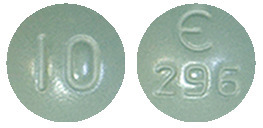
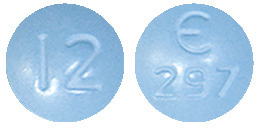
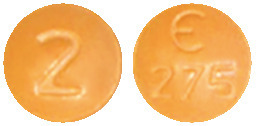
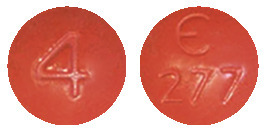
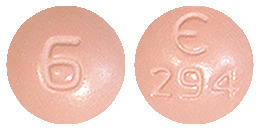
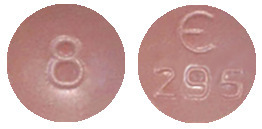

 The relative risk for suicidal thoughts or behaviour was higher in clinical trials for epilepsy than in clinical trials for psychiatric or other indications, but the absolute risk differences were similar for epilepsy and psychiatric conditions.
The relative risk for suicidal thoughts or behaviour was higher in clinical trials for epilepsy than in clinical trials for psychiatric or other indications, but the absolute risk differences were similar for epilepsy and psychiatric conditions. Based on the results from the population pharmacokinetic analysis of patients with partial onset seizures and patients with primary generalised tonic-clonic seizures, the total clearance of Fycompa was increased when co-administered with carbamazepine (3-fold), and phenytoin or oxcarbazepine (2-fold), which are known inducers of enzymes of metabolism (see Section 5.2 Pharmacokinetic Properties). This effect should be taken into account and managed when adding or withdrawing these AEDs from a patient's treatment regimen. Clonazepam, levetiracetam, phenobarbital, topiramate, zonisamide, clobazam, lamotrigine and valproic acid did not affect to a clinically relevant manner the clearance of Fycompa.
Based on the results from the population pharmacokinetic analysis of patients with partial onset seizures and patients with primary generalised tonic-clonic seizures, the total clearance of Fycompa was increased when co-administered with carbamazepine (3-fold), and phenytoin or oxcarbazepine (2-fold), which are known inducers of enzymes of metabolism (see Section 5.2 Pharmacokinetic Properties). This effect should be taken into account and managed when adding or withdrawing these AEDs from a patient's treatment regimen. Clonazepam, levetiracetam, phenobarbital, topiramate, zonisamide, clobazam, lamotrigine and valproic acid did not affect to a clinically relevant manner the clearance of Fycompa.
 TEAEs leading to dose reduction were observed in 40.6% of children. Common TEAEs leading to dose reduction in children included somnolence (13.3%), dizziness (5.6%), irritability (4.4%), and aggression (4.4%). TEAEs leading to discontinuation were observed in 9.4% of children. Reasons for discontinuation occurring in more than one subject were irritability (1.7%), aggression (1.7%), seizure (1.1%), and balance disorder (1.1%).
TEAEs leading to dose reduction were observed in 40.6% of children. Common TEAEs leading to dose reduction in children included somnolence (13.3%), dizziness (5.6%), irritability (4.4%), and aggression (4.4%). TEAEs leading to discontinuation were observed in 9.4% of children. Reasons for discontinuation occurring in more than one subject were irritability (1.7%), aggression (1.7%), seizure (1.1%), and balance disorder (1.1%). Therefore the number needed to treat (NNT) with any dose of Fycompa for 4 mg to 12 mg to achieve a 50% reduction in seizure frequency was 6.25 to 10.9.
Therefore the number needed to treat (NNT) with any dose of Fycompa for 4 mg to 12 mg to achieve a 50% reduction in seizure frequency was 6.25 to 10.9. Following 23 weeks of perampanel treatment, 42.6% of patients with partial-onset seizures, 43.7% in the subset of partial-onset seizure patients with secondarily generalized seizures, 34.8% of patients with primary generalized tonic-clonic seizures, and 35.3% in the subset of primary generalized tonic-clonic seizures of idiopathic generalized epilepsy (IGE) patients were very much improved or much improved compared to baseline, as assessed by Clinical Global Impression of Change (CGIC). The treatment effects on the CGIC observed above were sustained following 52 weeks of perampanel treatment.
Following 23 weeks of perampanel treatment, 42.6% of patients with partial-onset seizures, 43.7% in the subset of partial-onset seizure patients with secondarily generalized seizures, 34.8% of patients with primary generalized tonic-clonic seizures, and 35.3% in the subset of primary generalized tonic-clonic seizures of idiopathic generalized epilepsy (IGE) patients were very much improved or much improved compared to baseline, as assessed by Clinical Global Impression of Change (CGIC). The treatment effects on the CGIC observed above were sustained following 52 weeks of perampanel treatment.
